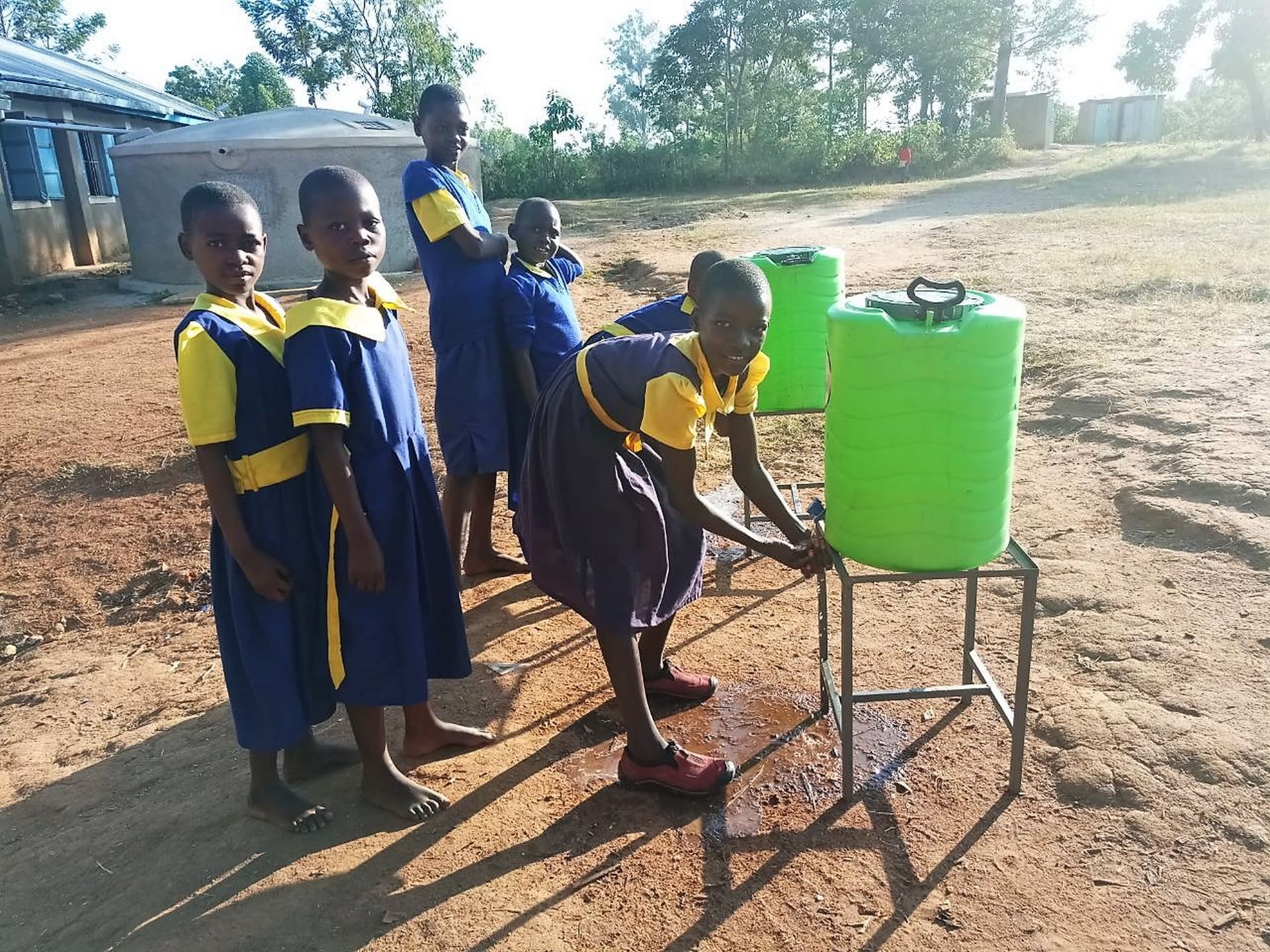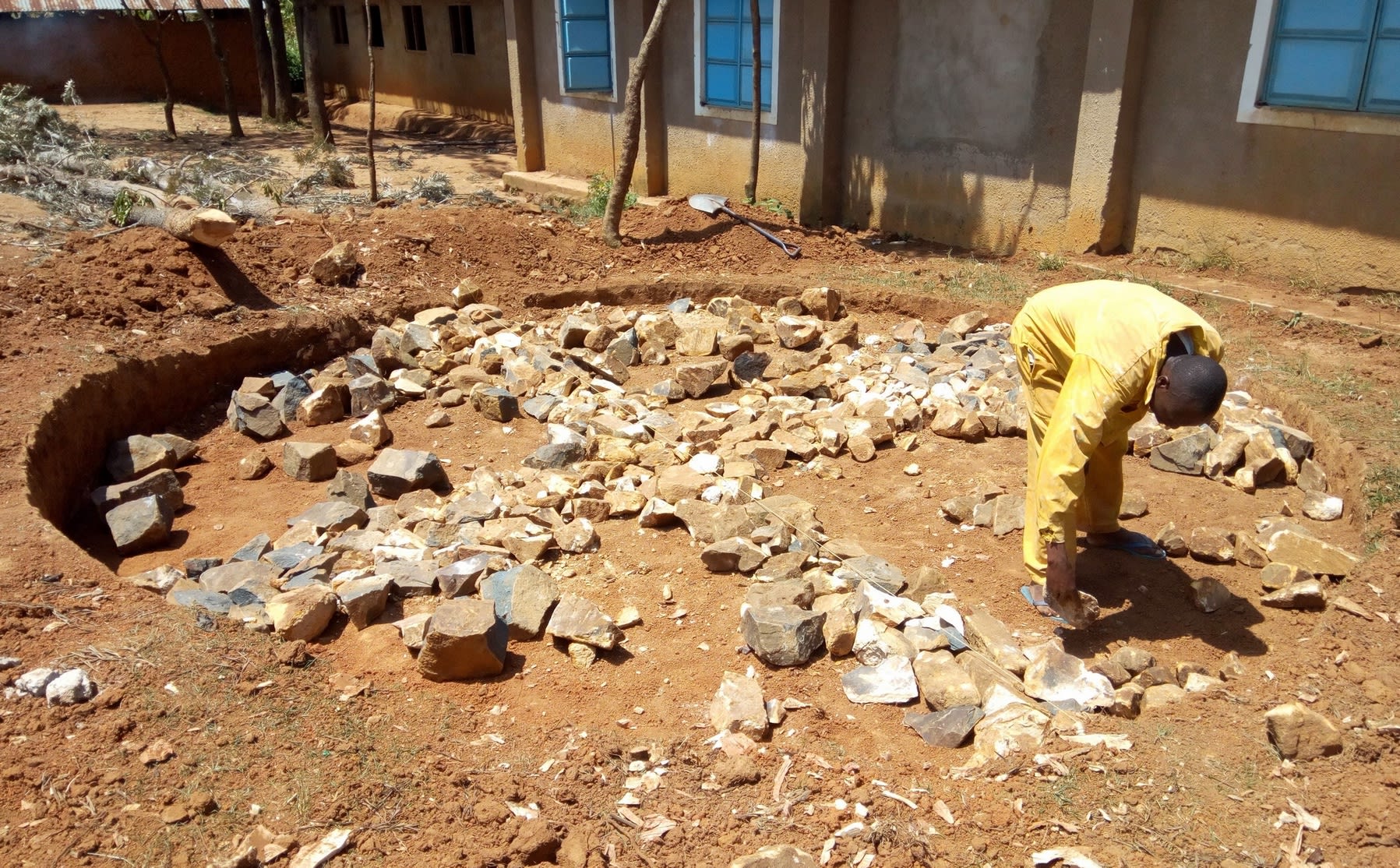This project is a part of our shared program with Western Water And Sanitation Forum (WEWASAFO). Our team is pleased to directly share the below report (edited for clarity, as needed).
Welcome to the School
Emukhalari Primary School was started in 1980 as an early childhood educational center until 1983 when it grew into a primary school. At this point, it had a student enrollment of 80, with Mr. Francis Salasya as their first headteacher. It registered to participate in its first KCPE (national exam) in 1990. The school is now sponsored by a Roman Catholic Church.
Now, the school has a total of 550 students with the enrollment of new students still ongoing. It employs 20 teachers total. (Editor's Note: While this many people may have access on any given day, realistically a single water source can only support a population of 350-500 people. This community would be a good candidate for a second project in the future so adequate water is available. To learn more, click here.)
Students report to school by 6am to clean the compound until 7am. When finished with their class chores, students are required to sit in study hall until 8:20am. Pupils from class six to eight are required to stay during the lunch hour to eat their meal at school. They eat a maize and bean mixture that is provided by teachers. At 3:20pm the children go to Litubwi Spring to fetch water and bring it to school for the next day. Children are dismissed at 6pm.
In this area, most people plant sugarcane or maize to sell to local factories or in the market.
Water Situation
The pupils of Emukhalari Primary fetch water from Litubwi Spring which is about 400 meters away from the school. The school has no tank or other kind of water storage facility. More often than not, the school requests that students fetch water before they're allowed to sit in class. When the children are sent to fetch water from the spring, they come back to school with dirty water.
"Mostly when the children go to fetch water at the spring, they come back muddy. Some water have carried dead fish that they catch in a stream near the spring and even lizard," said Deputy Headteacher Emma Nanda. Just a little bit of sleuthing uncovers that students will fill their containers just about anywhere they can get enough water, regardless of its quality. The spring becomes so congested with community members and students that students walk to a nearby fish pond (owned by a community member) to fill their containers.
After drinking this water, students suffer from cholera and typhoid.
Sanitation Situation
There aren't many usable latrines on school grounds: Some of the boys' latrines have begun to sink dangerously, made obvious by the tilting walls. The urinal is in very bad condition. The girls' latrines are too close to the boys' area, putting the students' privacy at risk.
There is just one hand-washing station for these hundreds of students. Garbage is thrown behind the classrooms and burned when piled too high.
Headmistress Emma Nandwa told us that they've even come close to shutting down because of these poor conditions. "We are really in need of the sanitation facilities in this school. At one point, the school was about to be closed by the national government due to poor sanitation and hygiene status in the school. The county government came to the rescue but it didn’t finish up the project and left it hanging. Right now the toilets which were being dug by the county government support have sunk because of heavy rains and worsened the situation in the school," she shared.
Plans: Hygiene and Sanitation Training and Hand-Washing Stations
Training will be held for two days. The facilitator will use PHAST (participatory hygiene and sanitation transformation), ABCD (asset-based community development), CTC (child to child), lectures, group discussions, and handouts to teach health topics and ways to promote good practices within the school. The CTC method will prepare students to lead other students into healthy habits, as well as kickstart a CTC club for the school. This CTC club will oversee the new facilities, such as hand-washing stations, and make sure they are kept clean and in working condition. The two hand-washing stations will be delivered to the school, and the club will fill them with water on a daily basis and make sure there is always a cleaning agent such as soap or ash.
Plans: VIP Latrines
Two triple-door latrines will be constructed with local materials that the school will help gather. Three doors will serve the girls while the other three serve the boys. And with a new source of water on school grounds, students and staff should have enough to keep these new latrines clean.
Plans: Rainwater Catchment Tank
A 50,000-liter rainwater catchment tank will help alleviate the water crisis at this school. The school will also help gather the needed materials such as sand, rocks, and water from the spring for mixing cement (students have already started helping). Once finished, this tank can begin catching rainfall that will be used by the school’s students and staff. Students will no longer be responsible to find enough water to carry to school every day.
We and the school strongly believe that with this assistance, standards will significantly improve. These higher standards will translate to better academic performance!

 Rainwater Catchment
Rainwater Catchment
 Rehabilitation Project
Rehabilitation Project
































